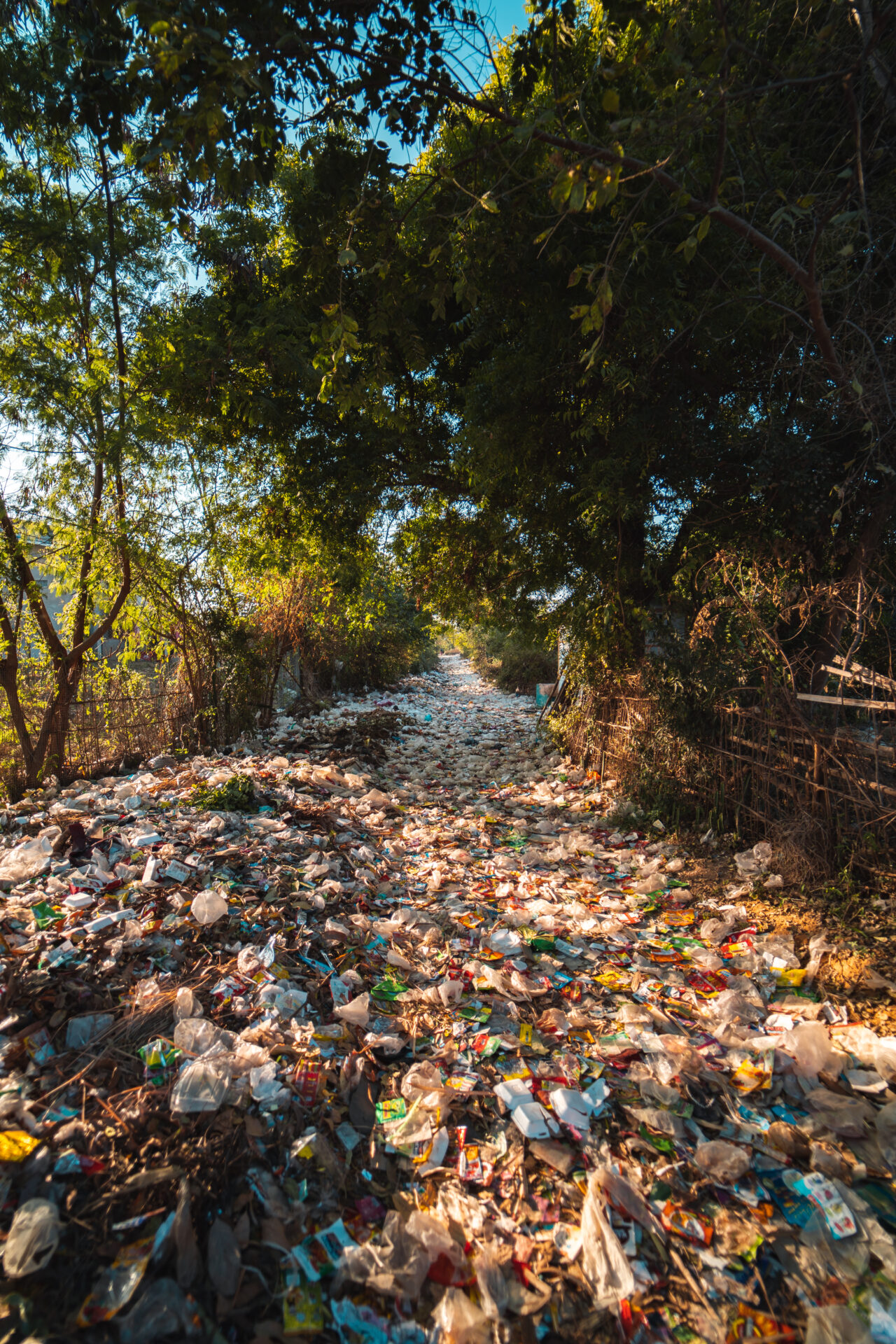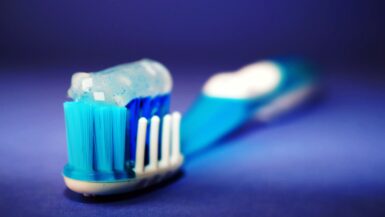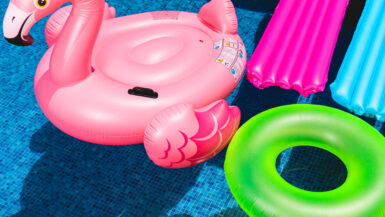In today’s world, plastic pollution has become an alarming concern that has prompted many individuals to seek eco-friendly alternatives in various aspects of their lives. One such area where significant changes can be made is in our laundry routines. As we strive to adopt a more sustainable lifestyle, transitioning to a plastic-free laundry routine can greatly contribute to reducing our carbon footprint. In this article, we will discuss the importance of making this shift, explore the various environmentally-friendly options available, and provide practical tips on how to successfully transition to a plastic-free laundry routine. By following these guidelines, you will not only benefit the environment but also create a healthier and more sustainable household.
Eco-Friendly Laundry Detergent Alternatives
Making the switch to environmentally-friendly laundry detergent alternatives is a significant step towards a plastic-free laundry routine. Conventional laundry detergents often contain harsh chemicals and come in plastic packaging, which can be detrimental to both the environment and our health. By opting for eco-friendly alternatives, you can reduce your plastic waste and opt for ingredients that are gentle on your clothes, your skin, and the planet. In this section, we will explore some popular and effective eco-friendly laundry detergent alternatives that can help you make this essential transition.
Soap Nuts
Soap nuts, also known as soapberries, are a natural and biodegradable alternative to traditional laundry detergents. They contain saponin, a natural surfactant that effectively cleans your clothes without the need for harmful chemicals. To use soap nuts, simply place a few in a small fabric bag and toss it into your washing machine along with your laundry. Not only are soap nuts gentle on fabrics and skin, but they can also be composted after use, making them a zero-waste option.
DIY Laundry Detergent
Creating your own laundry detergent at home is an excellent way to control the ingredients used and eliminate plastic packaging. A basic DIY laundry detergent recipe includes washing soda, baking soda, and grated bar soap or liquid castile soap. You can also add essential oils for a pleasant scent. By making your own detergent, you can ensure that it is free from harsh chemicals, and you can store it in reusable containers to further reduce plastic waste.
Eco-Friendly Laundry Detergent Strips
Laundry detergent strips are a relatively new innovation in the world of eco-friendly laundry products. These thin, dissolvable strips contain concentrated detergent and are simply placed in the washing machine with your clothes. They are usually packaged in recyclable or compostable materials, making them a great plastic-free option. Many brands offering these strips also prioritize using plant-based and biodegradable ingredients, further reducing their environmental impact.
Washing Machine Eco-Balls
Eco-balls are another alternative to traditional laundry detergents that can help you transition to a plastic-free laundry routine. These reusable balls contain natural mineral pellets that produce ionized oxygen to lift dirt and grime from your clothes during the wash cycle. With no need for detergent, you can eliminate plastic packaging and reduce the number of chemicals released into the environment. Eco-balls can be used for hundreds of washes before needing to be replaced, making them a cost-effective and sustainable choice.
By exploring and experimenting with these eco-friendly laundry detergent alternatives, you can find the option that best suits your needs and preferences. Making this change in your laundry routine will not only reduce your plastic waste but also contribute to a healthier and more sustainable lifestyle.
Reusable and Sustainable Fabric Softeners
Another vital aspect of transitioning to a plastic-free laundry routine is finding eco-friendly alternatives to traditional fabric softeners. Conventional fabric softeners often contain harmful chemicals and come packaged in single-use plastic containers. By opting for reusable and sustainable fabric softeners, you can significantly reduce your plastic waste and make a positive impact on the environment. In this subsection, we will explore various eco-friendly fabric softening alternatives that can help you create a greener laundry routine without compromising on the softness and freshness of your clothes.
Wool Dryer Balls
Wool dryer balls are an excellent reusable and sustainable alternative to traditional fabric softeners. Made from 100% natural wool, these balls can be placed in the dryer along with your wet laundry to help soften fabrics, reduce static, and cut down on drying time. They work by absorbing moisture and creating air pockets between clothes, allowing for better air circulation and faster drying. Wool dryer balls can be used for hundreds of dryer cycles and can even be scented with essential oils for added fragrance.
White Vinegar
White vinegar is a versatile and eco-friendly fabric softener that can be used in both the washing machine and the dryer. Simply add ½ cup of white vinegar to your washing machine’s fabric softener dispenser or during the rinse cycle to naturally soften your clothes and remove any lingering detergent residue. In addition, vinegar helps to maintain the color of your fabrics and can be used to reduce static cling in the dryer by adding a small cloth dampened with vinegar to the dryer along with your clothes.
Reusable Fabric Softening Sheets
A sustainable alternative to disposable dryer sheets, reusable fabric softening sheets can be made from natural materials such as cotton, bamboo, or hemp. These sheets can be infused with essential oils to impart a pleasant fragrance and can be used multiple times before needing to be refreshed. By switching to reusable fabric softening sheets, you can reduce your reliance on single-use plastics and disposable products in your laundry routine.
DIY Fabric Softener
Creating your own fabric softener at home allows you to control the ingredients used while eliminating plastic packaging. A simple DIY fabric softener recipe typically includes water, white vinegar, and your choice of essential oils for fragrance. Store your homemade fabric softener in a reusable glass or stainless steel container to further reduce plastic waste. By making your own fabric softener, you can ensure that it is free from harsh chemicals and safe for both your clothes and the environment.
Exploring and incorporating these reusable and sustainable fabric softeners into your laundry routine will not only help you transition to a plastic-free lifestyle, but also greatly reduce your environmental impact. Making these small changes can lead to a healthier, more eco-friendly, and budget-friendly approach to laundry care.
Energy-Efficient Washing and Drying Techniques
Adopting energy-efficient washing and drying techniques is an integral part of transitioning to a plastic-free laundry routine. By conserving energy and water, you not only contribute to reducing your overall environmental impact, but also save money on utility bills. In this subsection, we will explore various energy-efficient techniques for washing and drying clothes that can help you make your laundry routine more sustainable and eco-friendly.
Wash with Cold Water
One of the simplest ways to make your laundry routine more energy-efficient is to wash your clothes using cold water. Heating water accounts for a significant portion of the energy consumed during a wash cycle, and by opting for cold water, you can save both energy and money. In addition, cold water is gentle on fabrics, helps retain colors, and is effective in removing most stains.
Maximize Load Size
Washing full loads of laundry is another effective way to conserve energy and water. By maximizing the load size, you ensure that your washing machine operates at its maximum efficiency, reducing the number of wash cycles needed and the overall energy consumption. Be careful not to overload your machine, as this can lead to decreased cleaning efficiency and potential damage to your clothes and the appliance.
Choose an Energy-Efficient Washing Machine
Investing in an energy-efficient washing machine, such as those labeled with the ENERGY STAR certification, can significantly reduce your energy and water consumption. These machines are designed to use less water and energy without compromising on performance, making them an eco-friendly choice for any household. Additionally, they often come with features that allow for further customization of wash cycles to suit your needs and preferences.
Air Dry Your Clothes
Drying your clothes on a clothesline or a drying rack is an energy-efficient alternative to using a conventional dryer. By air-drying your clothes, you not only save energy but also prolong the life of your garments, as the heat from a dryer can cause wear and tear over time. If you live in an area with limited outdoor space or unfavorable weather conditions, consider investing in an indoor drying rack or using a well-ventilated room to dry your clothes.
Optimize Your Dryer Usage
If using a dryer is necessary, there are several ways to optimize its usage for energy efficiency. First, clean the lint filter after each use to ensure proper airflow and prevent overheating. Second, use the moisture sensor setting, if available, to avoid over-drying your clothes and wasting energy. Finally, consider using dryer balls to reduce drying time and energy consumption by improving air circulation and softening your clothes.
By implementing these energy-efficient washing and drying techniques, you can make significant strides towards a greener and more sustainable laundry routine. These small changes not only contribute to a plastic-free lifestyle but also help protect the environment and conserve valuable resources.
Plastic-Free Laundry Storage Solutions
In addition to adopting eco-friendly laundry detergents and fabric softeners, transitioning to a plastic-free laundry routine also involves rethinking the way you store your laundry supplies and accessories. By choosing sustainable storage options, you can further reduce your plastic waste and contribute to a healthier, more environmentally friendly home. In this subsection, we will explore various plastic-free laundry storage solutions that are both functional and aesthetically pleasing.
Glass and Stainless Steel Containers
When it comes to storing laundry detergent, fabric softener, and other laundry supplies, glass and stainless steel containers are excellent plastic-free alternatives. Both materials are durable, reusable, and recyclable, making them an eco-friendly choice for long-term storage. Moreover, they are available in a wide range of sizes and designs, allowing you to find the perfect container for your needs while adding a touch of style to your laundry room.
Reusable Cloth Bags
For storing smaller laundry items such as clothespins, dryer balls, and soap nuts, consider using reusable cloth bags made from natural materials such as cotton, linen, or hemp. These bags are lightweight, breathable, and washable, making them a practical and sustainable storage option. Additionally, they can be hung on hooks or placed in a basket to keep your laundry room organized and clutter-free.
Woven Baskets and Wooden Crates
Woven baskets and wooden crates are another plastic-free storage solution that can be used to hold laundry supplies, clean linens, and even dirty clothes. Both options are made from natural materials and can be found in various sizes and styles to suit your preferences. By using baskets and crates for storage, you not only reduce your reliance on plastic but also incorporate a touch of rustic charm into your laundry room decor.
Upcycled Storage Solutions
Upcycling is a creative and eco-friendly way to repurpose old or unwanted items into useful storage solutions for your laundry room. Some examples of upcycled storage options include using an old ladder as a drying rack, converting a vintage suitcase into a laundry hamper, or transforming mason jars into containers for laundry supplies. By upcycling, you can give new life to items that would otherwise end up in a landfill while creating unique and personalized storage solutions that reflect your style and commitment to sustainability.
Wall-Mounted Storage Systems
To maximize space and minimize plastic usage in your laundry room, consider installing wall-mounted storage systems. These systems can be made from materials such as wood, metal, or bamboo, and can include shelves, hooks, and pegs for organizing your laundry supplies and accessories. Wall-mounted storage systems not only save floor space but also provide a visually appealing and eco-friendly alternative to plastic shelving and organizers.
By incorporating these plastic-free laundry storage solutions into your home, you can further reduce your environmental impact and create a more sustainable laundry routine. These options not only help eliminate plastic waste but also enhance the overall aesthetic and functionality of your laundry room, making the process of doing laundry more enjoyable and eco-friendly.
Upcycling and Repurposing Old Laundry Items
Transitioning to a plastic-free laundry routine doesn’t have to mean discarding your existing laundry items. Instead, you can upcycle and repurpose them to create new, eco-friendly solutions for your laundry room. By doing so, you not only reduce waste but also give a new life to items that would otherwise end up in the landfill. In this subsection, we will explore various innovative ideas for upcycling and repurposing old laundry items, helping you create a unique and sustainable laundry space.
Transforming Old Laundry Baskets
If you have old plastic laundry baskets that are still in good condition, consider repurposing them into functional storage solutions. For instance, you can use them as planters for your garden, organizers for your children’s toys, or even as storage for sports equipment. By giving your old laundry baskets a new purpose, you can reduce your plastic waste and create practical storage solutions for various areas of your home.
Revamping Clothespins
Old clothespins can be upcycled into various decorative and functional items. For example, you can transform them into picture holders, fridge magnets, or even curtain tie-backs. Additionally, you can paint or decorate them to match your home decor or add a touch of personalization. By repurposing clothespins, you can create unique and eco-friendly items for your home while reducing waste.
Reusing Laundry Detergent Containers
Empty laundry detergent containers, especially those made of plastic, can be repurposed into a variety of useful items. Consider using them as watering cans for your plants, storage containers for pet food, or even as organizers for your garage or workspace. Make sure to thoroughly clean and sanitize the containers before repurposing them to remove any detergent residue.
Repurposing Old Sheets and Towels
Instead of discarding old sheets and towels, consider repurposing them into reusable cleaning cloths, pet bedding, or even as material for DIY sewing projects. By giving these items a new purpose, you not only reduce waste but also save money by not having to purchase new cleaning supplies or fabric.
Converting an Old Ironing Board
An old ironing board can be upcycled into a creative and functional piece of furniture or decor. For instance, you can transform it into a unique shelving unit, a potting bench for your garden, or even a quirky coffee table. By repurposing your old ironing board, you can create a one-of-a-kind item for your home while supporting a sustainable lifestyle.
By exploring these upcycling and repurposing ideas, you can make the most of your old laundry items while contributing to a plastic-free laundry routine. Embracing these creative solutions not only helps you reduce waste but also showcases your commitment to sustainability and eco-friendly living.





Leave a reply